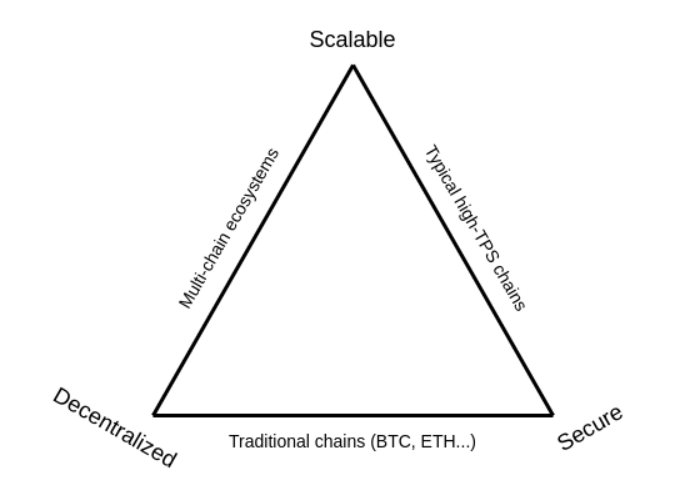
#NEAR 101: The chain that launched #ETH 2.0 before ETH
NEAR is a PoS next generation smart contract platform that aims at overcoming limitations of other chains (low throughput, low speeds, and poor cross-compatibility) and create an ideal environment for Dapps.
👇🧵(1/15)
NEAR is a PoS next generation smart contract platform that aims at overcoming limitations of other chains (low throughput, low speeds, and poor cross-compatibility) and create an ideal environment for Dapps.
👇🧵(1/15)
2. It’s what ETH 2.0 wants to be, but launched years before it.
#ETH 1.0 has many limitations. It’s not scalable and struggles with large volumes. This became very apparent when cryptokitties clogged Eth’s network in 2017. Since then, gas prices on ETH have🚀
#ETH 1.0 has many limitations. It’s not scalable and struggles with large volumes. This became very apparent when cryptokitties clogged Eth’s network in 2017. Since then, gas prices on ETH have🚀

3. Crypto has hardly been adopted by the world and yet ETH is struggling. In the long run, this is not sustainable. ETH 2.0 aims to solve this, but it taking a while.
$NEAR isn’t aiming to kill ETH. Instead, it aims at collaborating with ETH to reduce this bottleneck.
$NEAR isn’t aiming to kill ETH. Instead, it aims at collaborating with ETH to reduce this bottleneck.
4. #NEAR is building a compatible layer 1 that can be bridged back to ETH.
$NEAR is designed to be a next-generation platform for dapps.
NEAR is incredibly fast. It's able to process around 100,000 transactions per second
$NEAR is designed to be a next-generation platform for dapps.
NEAR is incredibly fast. It's able to process around 100,000 transactions per second
5. #NEAR's technology means it can achieve transaction fees that are 10,000x lower than they are on #Ethereum — making them essentially negligible.
6. #NEAR is designed to be approachable for people with little to no crypto knowledge. Regular users can access Dapps with UI that they are already familiar with.
7. #NEAR is developer friendly, they do not have to learn a new language. NEAR is Ethereum Virtual Machine (EVM) compatible, meaning that devs can use solidity and deploy ETH protocols onto $NEAR with minimal changes.
8. Using #NEAR's rainbow bridge, users can transfer tokens to NEAR in a trustless, decentralized manner. This is different from most other cross chain bridges.
9. They’ve cool UX features. Instead of a name like 24b2449124e, users have a readable address like abc.near
They’ve succeeded in bringing devs onboard, developer activity has been growing steadily.
They’ve succeeded in bringing devs onboard, developer activity has been growing steadily.

10. The $NEAR token is the native token used for governance, staking and rewards.
The protocol possesses an unusual governance structure. Instead of one #DAO, the governance of the network is divided into guilds.
The protocol possesses an unusual governance structure. Instead of one #DAO, the governance of the network is divided into guilds.
11. There are 7 guilds. Each guild represents a different department, including a marketing department and an engineering guild. Each guild works as its own DAO.
12. $NEAR has a max supply of a 1B coins, with a little over 600M in circulation. NEAR has a market cap of around 660M and the $NEAR is at ~$9.8 rn.
NEAR has grown significantly in the last year, almost 10x.
NEAR has grown significantly in the last year, almost 10x.
13. #NEAR is an interesting solution to #ETH's problems. In the future, chains have to be able to scale and handle huge loads. #ETH already struggles with this.
This needs to change for mass adoption. The high costs are a huge barrier to entry.
This needs to change for mass adoption. The high costs are a huge barrier to entry.
14. #NEAR is fast, scalable and approachable. They've been growing a lot. Their team is solid. And they've backing from big names like @a16z and @dragonfly_cap
15. Here are some accounts to follow for $NEAR insights:
@hosseeb @ivanbogatyy @ashwinrz @decryptmedia @thedefiedge @Gojo_Crypto @peterflux @analyticalali @ahboyash @kinaumov @Near_Mates @NEAR_Blockchain
Spent a lot of time writing this, a like and RT would mean a lot!
@hosseeb @ivanbogatyy @ashwinrz @decryptmedia @thedefiedge @Gojo_Crypto @peterflux @analyticalali @ahboyash @kinaumov @Near_Mates @NEAR_Blockchain
Spent a lot of time writing this, a like and RT would mean a lot!
16. Thanks a lot for reading this. I write 101s and all things crypto, follow to keep up. Here some other chain 101s that I wrote (#AVAX, #Terra, #Fantom, #Polygon, #Cosmos, #onFlow ):
https://twitter.com/Cov_duk/status/1500714387417436168
• • •
Missing some Tweet in this thread? You can try to
force a refresh






